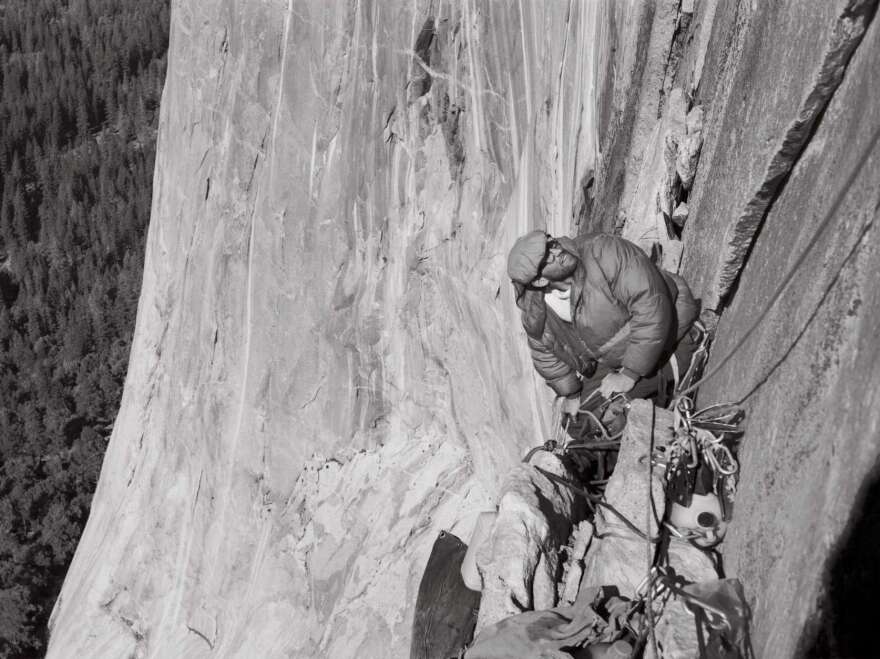Right now, two men are hanging out on the side of a 3000-foot cliff in Yosemite National Park, hoping to make history. For the last two weeks, they've been free climbing the Dawn Wall of El Capitan. If they succeed, it will be the most difficult climb ever completed.
NPR's Melissa Block spoke to both climbers, Tommy Caldwell and Kevin Jorgeson, earlier this week — you can hear the interview, read about them and see pictures here.
But Caldwell and Jorgeson are the first to acknowledge that their expedition is made possible by attempts on the same wall over the past half century. A new documentary, Valley Uprising, tells the story of the adventurers who came before them.
The story begins in the 1950s, when beatnik culture was emerging in San Francisco, just 300 miles from Yosemite.
"This was really not only the birth of climbing but the birth of American counterculture," Nick Rosen, who co-wrote and directed the documentary with Peter Mortimer, tells NPR's Arun Rath.
"A lot of these early climbers were inspired by a book Jack Kerouac wrote in 1958 called The Dharma Bums," in which he and a group of young men climb a mountain in Yosemite.
At the same time, Rosen says, Yosemite was run by the federal government. The National Park Service didn't like the camps of beatnik climbers coming in. "There was kind of a cultural clash that happened between these two groups even dating back to the 1950s, and one that pretty much continues to this day," Rosen explains.

In the early days of Yosemite climbing, there was also a culture clash happening within the new sport of rock climbing. At its core, it was a disagreement about the role of gear in climbing. Some climbers felt that the sport was first and foremost about getting to the top of cliffs, by any means necessary. They would drill as many permanent bolts into the rock as possible, hoisting themselves up by with ropes. Leading this group was a vagabond construction worker named Warren Harding.
"[He was] this hard-drinking, iconoclast kind of nutcase of a man," says Rosen. "When he was doing a climb he could bring up bottles of wine and food and Thanksgiving turkeys and women and have these crazy parties up there."
But others saw this as sacrilege. Climbing, they thought, was a pure endeavor, to be done with as little gear as possible. The leader of this group was Royal Robbins, "this very imperious, purist, philosopher king who was also the most respected and talented climber in Yosemite Valley," Rosen says.

Both climbers made major first ascents in Yosemite Valley during the 1950s and 1960s. But it was Royal's philosophy that won out.
El Capitan's Dawn Wall — the site of the current expedition — is a cliff first scaled by Warren Harding. He used permanent bolts and climbed assisted by ropes; still, the rock face is so sheer that it took him 28 days to reach the top.
Tommy Caldwell and Kevin Jorgeson, the climbers currently tackling the Dawn Wall, are purists, climbing the rock by human power alone. Their ropes are only for safety. If they reach the top, it will have been by pulling themselves up with just their hands and feet — an achievement Rosen says would be the hardest big-wall rock climb ever performed, anywhere in the world.
In their attempt, he says, they stand on the shoulders of the pioneering Yosemite climbers of decades past.
Copyright 2020 NPR. To see more, visit https://www.npr.org. 9(MDAwMzY5MzE4MDEzMTE3ODg5NDA4ZjRiNg004))



